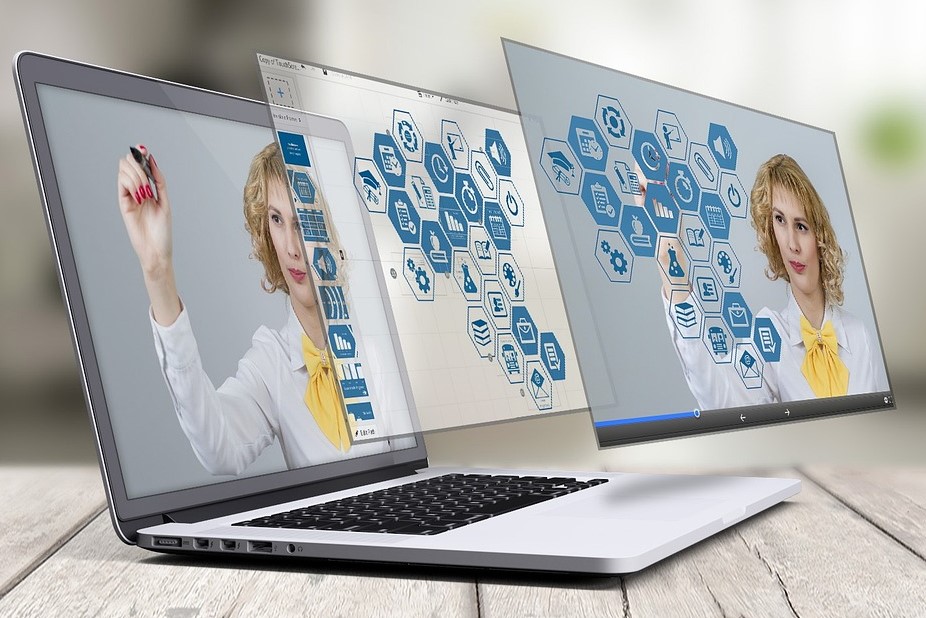INTRODUCTION
In a time of unrelenting technological advancement, the field of education is at the core of a digital revolution. In order to alter conventional teaching paradigms, this article aims to unravel the complex web of transformative technology in contemporary education. A new era of interactive, personalized, and globally accessible learning experiences is being shaped by cutting-edge technologies such as interactive simulations, artificial intelligence(AI), augmented reality (AR), and virtual reality (VR). These technologies will be explored as we set out on this digital odyssey.

The Technological Tapestry
Imagine teaching science as an immersive experience, history as real-world history, and complicated mathematical ideas as interactive puzzles. The use of cutting-edge technologies in the classroom is painting this picture. Beyond the confines of conventional methods, technologies like interactive simulations, artificial intelligence, augmented reality, and virtual realityare completely changing the educational scene.
Virtual Reality in education
Virtual Realityis now a real thing, transforming classrooms into immersive learning spaces. Students can now travel through ancient civilizations, see historical events firsthand, and have a deep understanding of the past—history is no longer limited to dusty textbooks. By taking students to previously unreachable locations and eras, virtual reality (VR) transforms learning into an exciting journey.
Augmented reality enhancing engagement
The dynamics of student engagement are changing as a result of augmented reality's capacity to superimpose digital content on the actual world. Imagine a literary lecture where characters from famous novels come to life, or a biology class where 3D models of cells appear straight out of textbooks. By adding interactivity and compelling elements, augmented reality (AR) improves traditional learning materials and meets the needs of a generation that was nurtured in the digital age.
Artificial intelligence: A Personalized Guide
Previously limited to science fiction, artificial intelligence (AI) has now become a part of contemporary schooling. AI has evolved from being a sci-fi notion to a driving force that is ushering in a new era of individualized learning experiences. AI-powered adaptive learning systems with complex algorithms carefully examine each student's performance, exploring the subtleties of their learning preferences, styles, and aptitudes. These technologies provide a unique educational trajectory for every student by dynamically adjusting content delivery in real-time based on their unmatched precision in identifying strengths and weaknesses.
This customized approach recognizes the inherent variability in individuals' learning styles and goes beyond typical one-size-fits-all approaches. This customized approach recognizes the inherent variability in individuals' learning styles and goes beyond typical one-size-fits-all approaches. It guarantees that every student sets out on a distinct educational path, working through a curriculum tailored to their own understanding speed. AI acts as a teacher's assistant in this digital environment, providing focused assistance when required and pushing pupils to reach new heights in order to build confidence and a sense of mastery.
Furthermore, adaptive feedback loops are made possible by the ongoing nature of AI assessment, which offers immediate insights into a student's development. In addition to giving teachers the ability to refine their methods of instruction, this real-time feedback helps students become more self-aware and motivated to actively participate in their education.
AI integration in education signifies a paradigm shift in the way we conceptualize and impart knowledge. It goes beyond normal time and space rules to provide learning experiences at any time that fit different schedules, preferences. Students can join fun learning tools, get their own stuff and use targeted help made just for them.

Interactive Simulations: Bridging Theory and Practice
The concept of applying science to practice is no longer only theoretical thanks to interactive simulations. Through a range of exercises, such as business simulations, physics simulations, and chemical experiments, students actively apply their knowledge in the real world. This practical method not only reinforces theoretical concepts but also develops problem-solving skills that are critical for facing future challenges.
Breaking down physical barriers
The massive digital renaissance in education extends beyond the walls of traditional classrooms. Online learning platforms, webinars, and Massive Open Online Courses (MOOCs), break down geographical barriers by providing high-quality education to students worldwide. The democratization of knowledge has made education a basic entitlement for all people with an internet connection.
Challenges on the Digital Frontier
Even while there are a lot of benefits to a digital transformation in education, there are also some difficulties that must be recognized and overcome. Unequal access to technology is known as the "digital divide," and it continues to be a major source of worry. It is crucial to guarantee fair access to digital materials in order to stop future gaps in educational possibilities and promote an inclusive classroom.
Teacher as a guide in the Digital Odyssey
With education undergoing a massive transition into the digital age, teachers play a more important role than before. Teachers become mentors, advisors, and facilitators of individualized learning experiences. Information transmission becomes secondary to the development of critical thinking, creativity, and digital literacy. It becomes crucial for educators to engage in ongoing professional development because it gives them the tools they need to successfully mentor students and navigate the digital environment.

CONCLUSION
The digital renaissance in education is not merely an evolution but a revolutionary reimagining of the learning experience. Interactive simulations,Artificial Intelligence, Virtual Reality, and Augmented Reality are not just tools; they are catalysts for a new era of interactive, personalized, and globally accessible education. As we navigate this digital odyssey, it is imperative to address challenges, ensure inclusivity, and empower educators to guide students in harnessing the full potential of the technological tapestry reshaping the future of learning. The digital renaissance in education is not just about embracing technology; it's about empowering minds for a future where knowledge knows no bounds, and the pursuit of learning becomes an exhilarating adventure.


You must be logged in to post a comment.